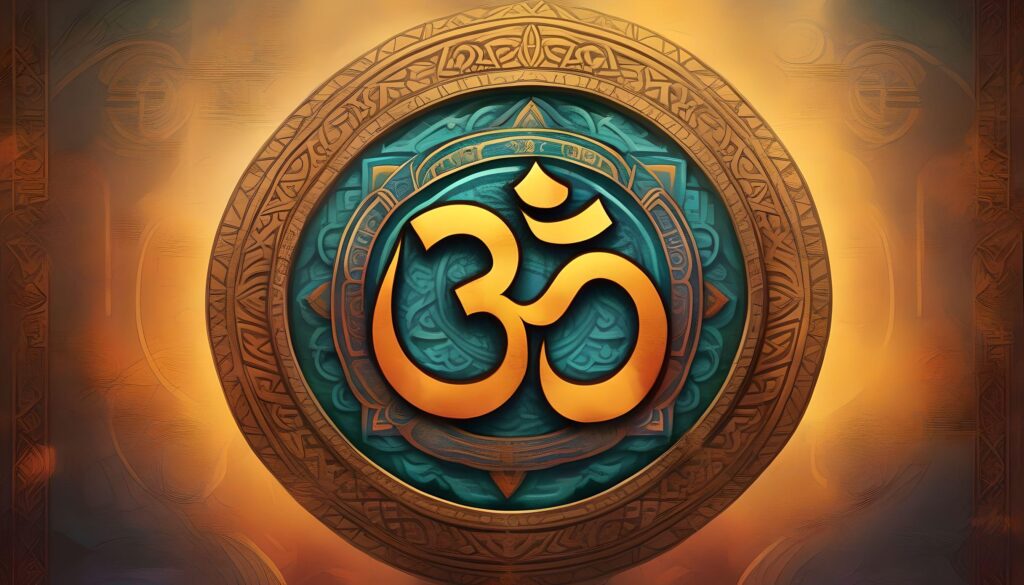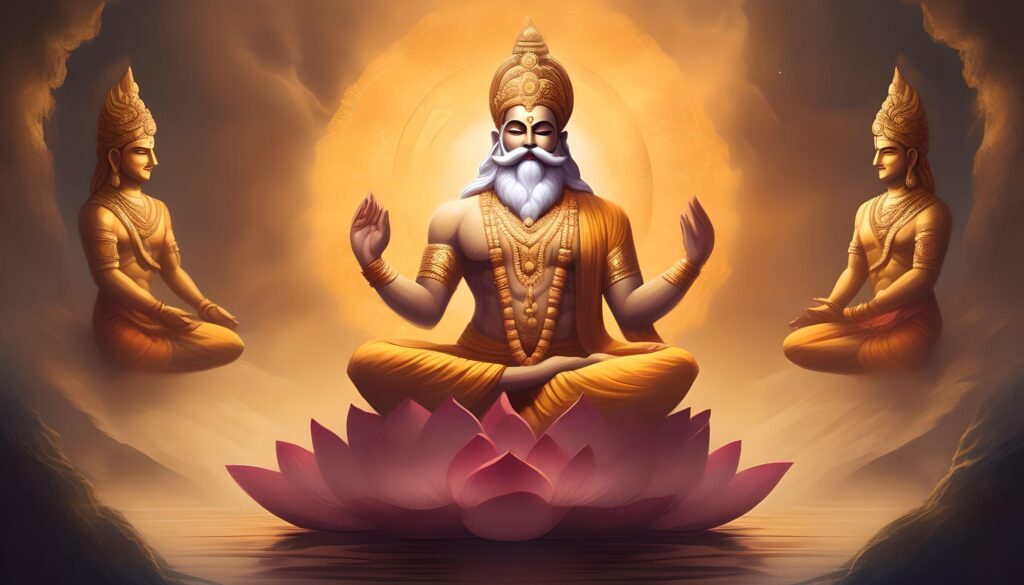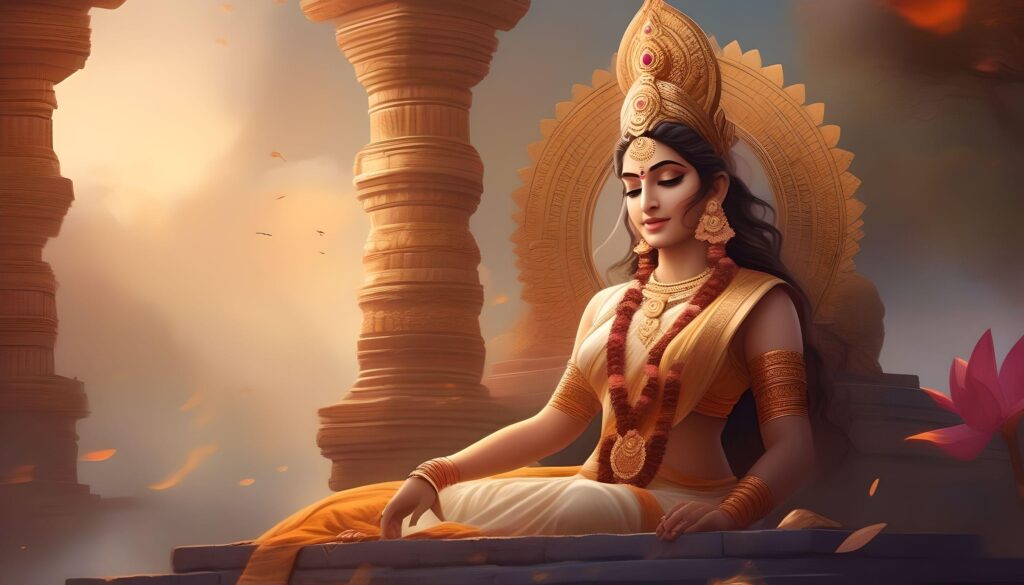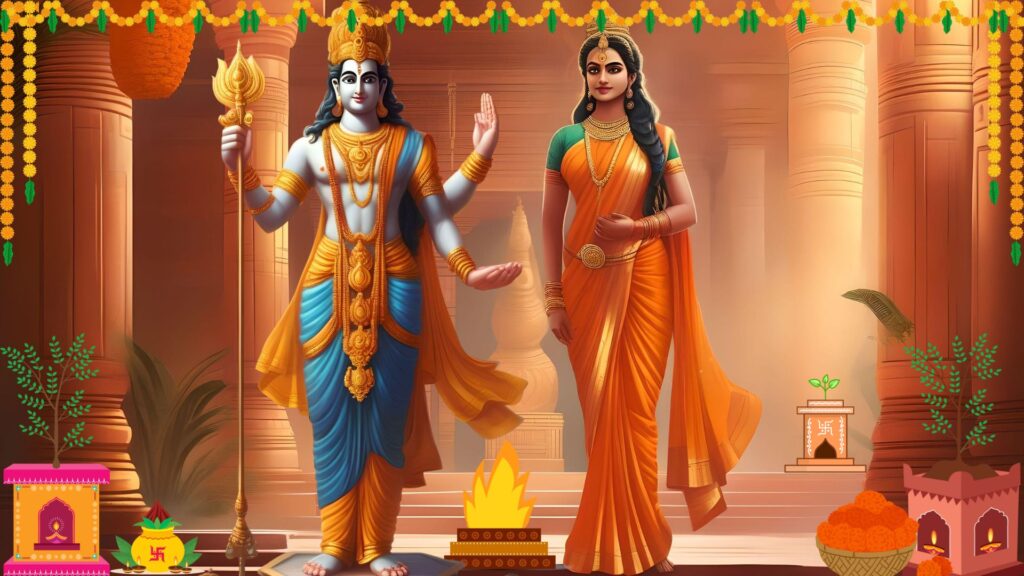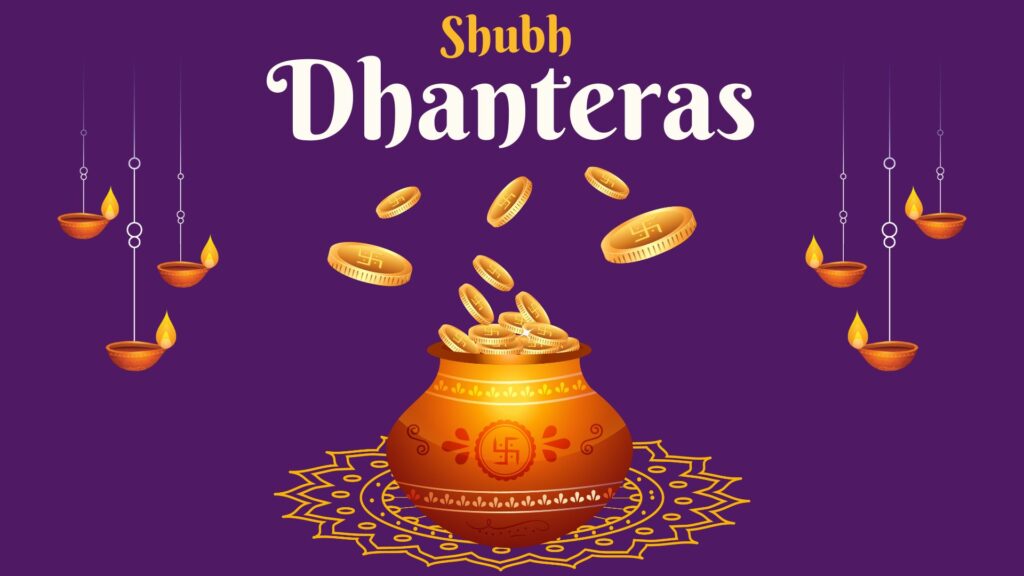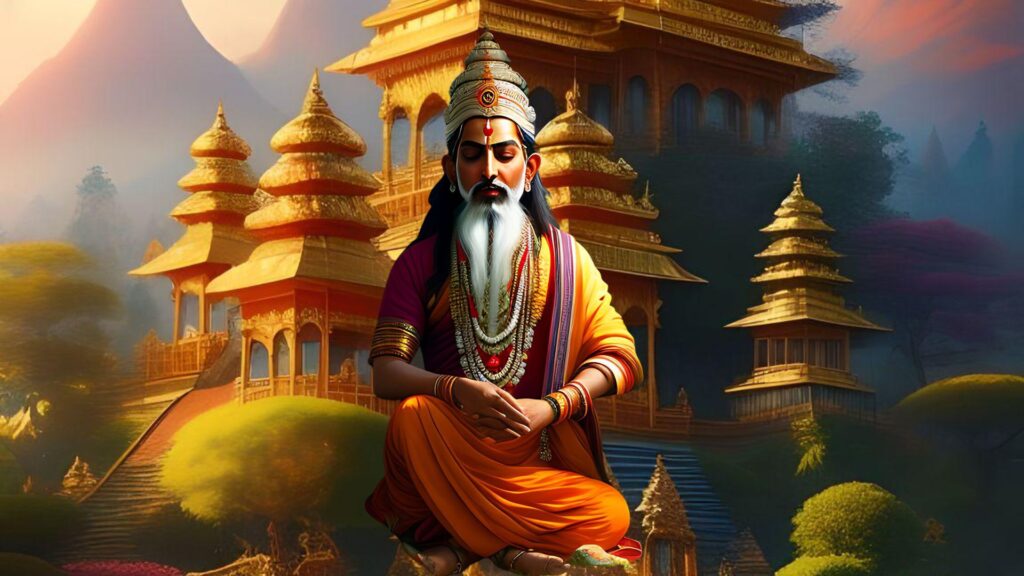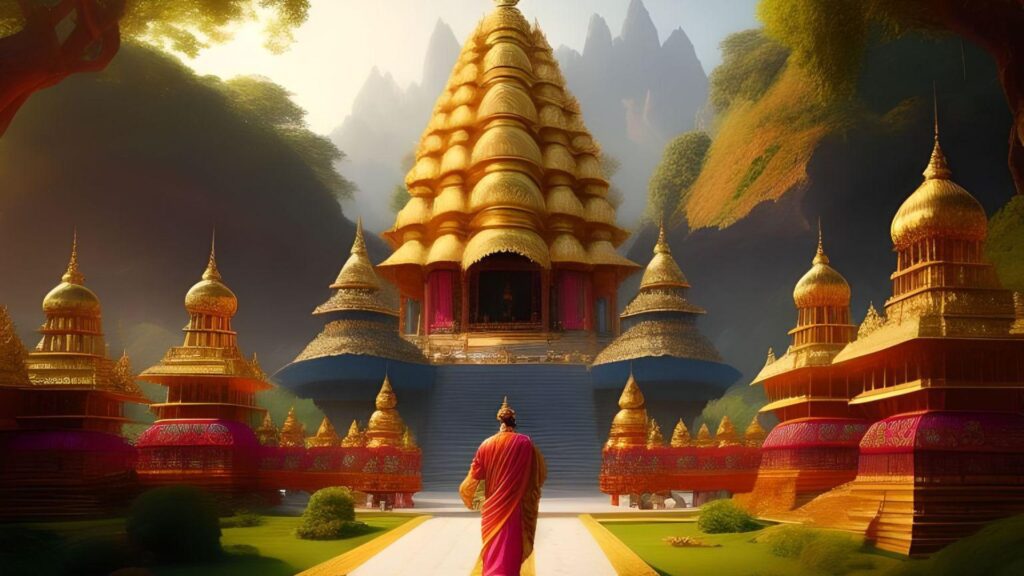Sacred Rivers in Hinduism: Exploring the Divine Flow
Introduction
Hinduism attributes profound significance to rivers, which are regarded as celestial entities. It is widely acknowledged that these rivers are sanctified and are correlated with a multitude of deities. Every river in the Ganges River system, from the tranquil Yamuna, possesses its own set of mythological annals and spiritual significance.
An in-depth analysis of the ten holiest rivers in Hinduism, including their symbolism, legends, and significance in the lives of millions of devotees, will be presented in this article.
Ganga: The Divine Flow of Purity
In Hinduism, it is impossible to discuss sacrosanct rivers without mentioning the Ganges, also known as Ganga. The river Ganges is regarded with the highest regard in the Vedas and Puranas, which regard it as the holiest of all rivers. Ganga is purportedly the progeny of Himavan, the divine embodiment of the Himalayas, and Menavati, an apsara (celestial divinity), according to legend.
Additionally, she is referred to as the sister of the mother deity Parvati. Belief holders place their trust in the notion that a bath in the Ganges can expiate transgressions and facilitate the attainment of moksha, or liberation.
A narrative originating from the Bhagavata Purana and Devi Bhagavata Purana designates Ganga, in addition to Lakshmi and Saraswati, as one of Vishnu’s three spouses. Saraswati became envious upon observing Ganga’s fondness for Vishnu and falsely accused Ganga of attempting to seize the latter’s devotion.
As a consequence, a fervent dispute ensued among the deities. In order to maintain his impartiality, Vishnu refrained from intervening. Ganga, in retaliation for Saraswati’s ire, was cursed to manifest as a river on earth. Ganga, in turn, cursed Saraswati. As Lakshmi was doomed to be born as the tulasi plant, this legend additionally elucidates its genesis.
An additional noteworthy narrative pertains to Ganga’s ascent from Svarga, the celestial abode. As a member of the Solar dynasty, King Bhagiratha desired to retrieve Ganga from Patala, the underworld, in order to purify the spirits of his ancestors who were imprisoned there.
Ganga cautioned, nonetheless, that her descent might cause a global flood. Then, Bhagiratha approached Shiva for assistance, and he consented to provide aid. Shiva captured Ganga in his hair as she descended in order to contain her ferocious flow. In adherence to Bhagiratha’s entreaty, the Ganga proceeded towards Patala for the purpose of soul purification before emptying into the ocean.
Yamuna: The Serene Sister of Yama
Yami, which is another name for Yamuna, symbolizes the Yamuna river. It is postulated that she is the progeny of the celestial sun deity Surya and the cloud goddess Saranyu. The goddess of life and the twin sister of Yama, the deity of the underworld, Yamuna is revered as such. Her name is occasionally appended to subsequent texts as Kalindi.
An anecdote from the Bhagavata Purana describes a time when the deity Balarama desired to swim in the Yamuna with women. Upon his appeal for the deity Yamuna’s assistance, she refused to vacate her banks. As a result, Balarama employed his plough to forcibly transport the river deity to the orchard in which he was stationed.
Saraswati: The Goddess of Knowledge and Art
Initially, Saraswati was a river deity linked to the Sarasvati. She rose to prominence in Hinduism as an incarnation of wisdom, melody, language, and craftsmanship. It is believed that the Saraswati river, which is mentioned in the Rigveda, has progressively dried up.
As per certain historical accounts, a turbulent conflict ensued between the Hehayas and Bhargavas, which allegedly generated a colossal inferno known as Vadavagni. This conflagration was capable of causing global destruction. To contain the fire securely, Indra, Vishnu, and other deities beseeched Saraswati’s assistance. Nevertheless, Saraswati maintained her stance and demanded consent from her spouse, Brahma, prior to granting his assistance.
After receiving blessings from Brahma, Saraswati and Ganga embarked on a voyage from Brahmaloka to the ashrama of Sage Uttanka. During her encounter, Shiva bestowed upon her the Vadavagni contained within a container and gave her the directive to emanate from a plaksha tree.
As a result of merging with the tree, Saraswati became a river. As she approached Pushkara, she paused at Pushkarini to absolve humanity of their transgressions. She ultimately arrived at the ocean, where she submerged the fire, thereby ensuring the protection of the planet.
Narmada: The Daughter of Shiva
Known as Rewa, Narmada is held in high regard as the personification of the Narmada river. As per legend, her origin can be traced back to the perspiration of Shiva while he was performing profound penance atop Mount Riksha. According to this mythological narrative, her lineage is ascribed to Shiva, thereby designating her as his daughter in the estimation of devout individuals.
As per folklore, Shiva endowed her with the ability to purify the transgressions of those who partake in her waters, thereby elevating her stature to that of the Ganga in the southern and northern regions, respectively. Therefore, in Hindu mythology, Narmada occupies a revered status, serving as a symbol of chastity and atonement via her writhing waters.
Kaveri: The Fertile Goddess
Locally referred to as Kaveriamma, the river Kaveri is considered to be the embodiment of the deity Kaveri. As stated in the Skanda Purana, Vishnu assumed the form of Mohini, an aesthetically pleasing female, during the Samudra Manthan in order to bestow the elixir of eternal life upon the celestial beings while withholding it from the malevolent. Lakshmi, the spouse of Vishnu, dispatched Lopamudra, an apsara, to assist Mohini with this undertaking.
Brahma ultimately adopted Lopamudra. In response to King Kaveri’s petition to Brahma for a son, Lopamudra was bestowed with the name Kaveri. She was regarded as a deity capable of expiating transgressions and bestowing fertility.
Sage Agastya expressed her intention to wed Kaveri, and she consented under the stipulation that he would ensure her constant companionship. Nevertheless, Agastya eventually devoted himself to instructing his disciples, disregarding Kaveri. Kaveri, experiencing a sense of abandonment, overflowed into Agastya’s water container (kamandalam) before continuing south. She persisted in spite of Agastya’s disciples’ attempts to impede her until she reached the ocean. Because of this deed, she has been held in the highest regard ever since.
Godavari: The River of Rama
Sacred to ancient mythology, the deity Godavari is regarded as the physical manifestation of the formidable river Godavari. As per legend, the sage Gautama was endowed with a well that supplied an inexhaustible supply of cereals and resided in close proximity to the Brahmagiri hills. In pursuit, however, his adversaries inadvertently led a bovine into his granary, whereupon it perished. To atone for the transgression committed, Gautama beseeched the divine Ganga for absolution.
Ganga, inspired by Shiva’s contrition, descended alongside him and materialized as the revered river Godavari. Her celestial presence imparted purity upon the land and sanctified Gautama’s hermitage.
The significance of the epic tale of Rama from the Ramayana is enhanced by the intertwining of the myth of Godavari. Instigated by Gautama’s entreaty for redemption, the goddess’s descent represents divine absolution and purification.
As it meanders gracefully across the topography, the river Godavari embodies the profound power of spiritual rejuvenation and purification. The river’s mythical status is further enhanced by its connection to Rama’s voyage along its banks; this narrative continues to resonate across time.
Krishna: The Personification of the River
The deity Krishna is purported to be the embodiment of the river Krishna, according to a local legend. During a sacrosanct ceremony known as yajna, Brahma, a deity, reportedly required the presence of his wife Savitri. However, in her absence, Savitri had Gayatri, his other spouse, stand in for her. Upon discovering the truth, Savitri was enraged. She arrived hastily at the ceremony and demanded responses. Because of the intensity of her rage, she uttered curses upon two additional deities, namely Vishnu and Shiva. Because of her oath, Vishnu was transformed into the Krishna River.
Sindhu: The Goddess of Rivers
As the deity of rivers, Sindhu is revered as the embodiment of the River Indus. She is mentioned in ancient texts such as the Mahabharata, Vedas, and Puranas. Bharata, a figure of significance, was treated with veneration by this deity. She is also mentioned as participating in a discourse on the obligations of women at a gathering of river goddesses presided over by Parvati.
Tapati: The Daughter of the Sun
Tapati is the personification of the Tapti river in Hindu mythology. She is depicted as the daughter of Surya, the Sun god, and the younger sister of Savitri. According to Hindu texts, Tapati is married to a king named Samvarana.
Brahmaputra: The Son of Brahma
Historical accounts of the origin of the Brahmaputra river are documented in the Kalika Purana. This legend describes a sage by the name of Shantanu and his spouse, Amogha. They made their dwellings along the Lohita Riverbanks. Individuals who were extremely devout and spiritual. A day came when the universe’s creator, Brahma, was so moved by their devotion that he made the decision to bestow a blessing upon them.
He bestowed a child upon them, which transpired to be Brahma’s own son. Rather than assuming the form of a human at birth, the infant metamorphosed into a magnificent river. The name given to this river was Brahmaputra. Its divine aura and significance were further enhanced when deities and celestial beings visited it to cleanse, transforming it into a holy site.
Conclusion
The rivers revered as sacrosanct in Hinduism possess profound cultural and spiritual significance. These aquatic formations are not mere conduits of life, but rather celestial beings representing holiness, redemption, and authenticity. Mythological narratives and legends associated with every river, ranging from the tranquil Yamuna to the formidable Ganges, persistently captivate millions of devotees. A profound comprehension of the sacred rivers’ significance enhances one’s admiration for the intricate fabric of Hindu mythology and spirituality.

